Barrel shortage? Woodworker jumps in.
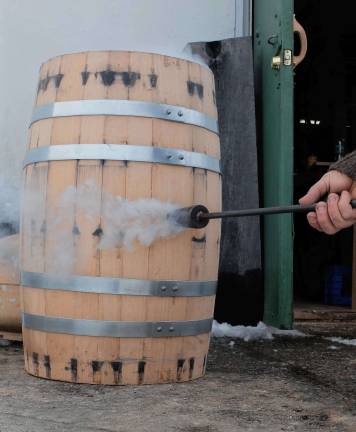
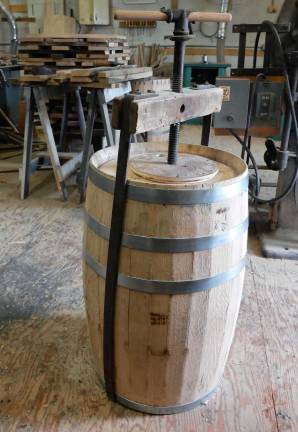
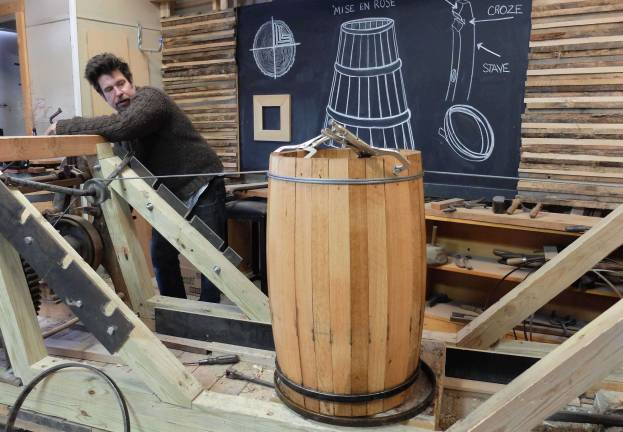
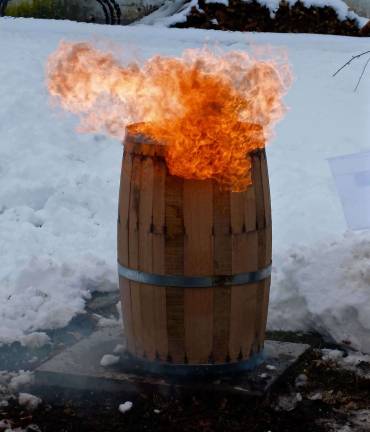
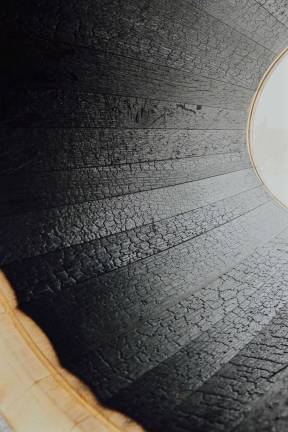
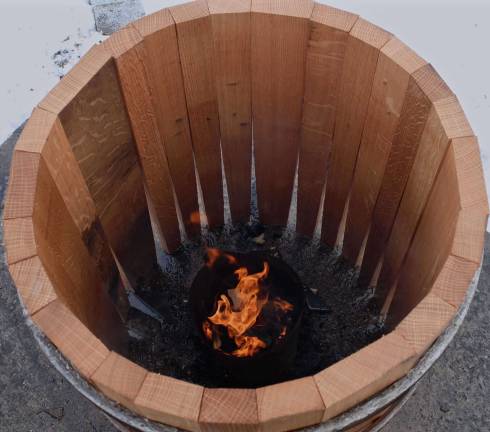
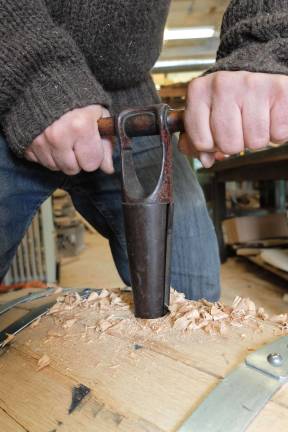
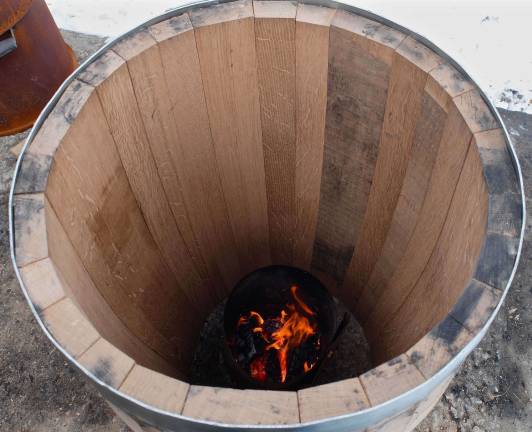
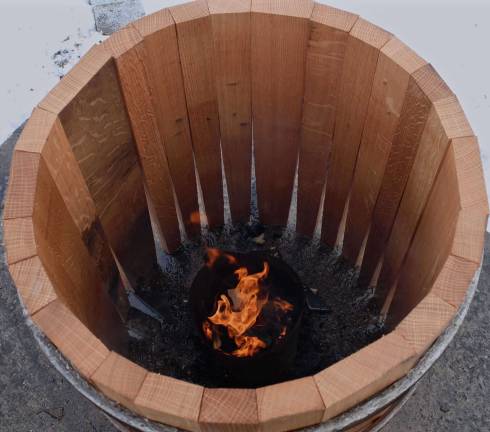
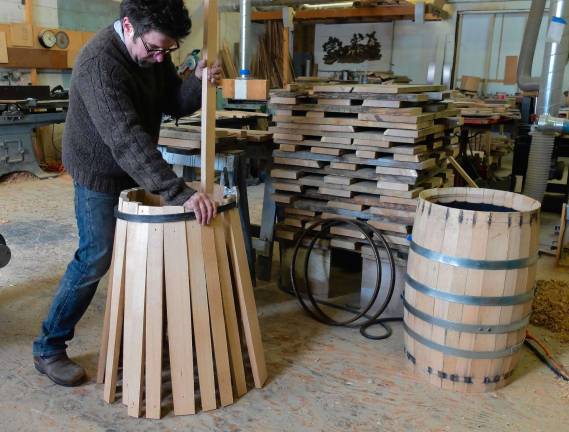
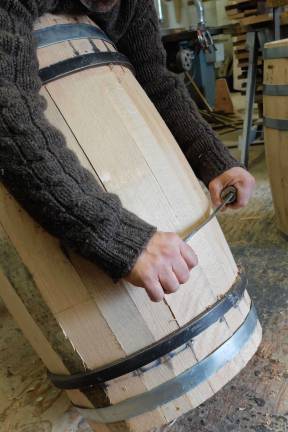
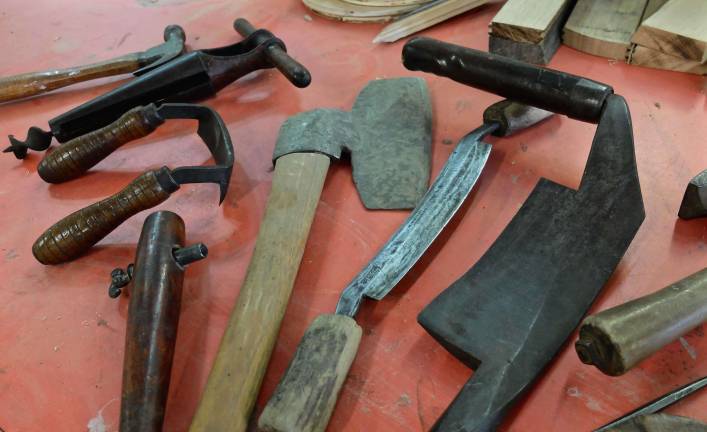
“Four years ago I find out there’s a barrel crisis in America,” says John Cox, in his wood shop in High Falls, NY. He tilts an oak barrel; the char on the wooden staves of the interior catches the light. “A barrel shortage!”
Regulations say, “It must be aged in a new, oak, charred barrel. Distillers are popping up everywhere in New York and they’re still bound by this law. They can’t reuse the barrel,” he says gleefully. The law he refers to is a 1935 Federal act, lobbied for by the cooper’s union, which regulates the production of whiskey.
Coopers––craftsmen of wooden, staved vessels, bound with hoops––were valued members of society for more than 2,000 years. They made it possible to store and ship wet and dry goods, including fresh water and food for cross-Atlantic journeys. By the mid-20th century, however, the trade had become almost obsolete. Cox took a leap of faith, packed up his high-end cabinetry business, and learned to make barrels.
“Here on the Hudson River,” coopers were the silent partner in getting “oysters from Chesapeake Bay, cement from Kingston, pine tar from North Carolina,” said Cox.
Learning to make a barrel wasn’t easy, notwithstanding Cox’s woodworking and math skills. “It took me two years of R & D to figure out,” he admits. “There’s only wood, metal hoops, and rivets. That’s it,” he said, and still, “many systems have to come together.”
Because the trade was passed down generation to generation, there are few written records. Cox started buying 17th century coopers tools, finger ridges worn in their wooden handles from a former lifetime. “These told me a story,” he said. “That was my school.”
He reverse engineered existing barrels, working out the geometric formula to fit together the staves, and built custom jigs for his woodworking machines that cut the precise angles needed. Three years in, orders are coming in, and he has a working relationship with nearby Stoutridge Vineyard and Distillery. He’s helping owner Steven Osborn develop the flavor profile of their new line of spirits with his custom toasted and charred oak barrels.
The name for Cox’s company, Quercus Cooperage, comes from the white oak that grows in abundance in the Catskills. Of the 30 or so coopers handcrafting barrels in America, he’s the only one exclusively using New York white oak. It not only gives him a regional distinction, it’s also perfect for barrel making. As it matures, the pores in the heartwood seal up, making it rot resistant and, when sawed properly, watertight. Cox leaves the oak to air dry for two or three years, allowing excess tannins to flush out so they won’t impart their astringent taste, and keeping the wood supple enough to work with.
The first step in raising a barrel is cutting and shaping the 25 oak staves of varying widths, and arranging them inside a metal working hoop. Cox places the open-ended barrel over a small fire, dousing it with water, steaming the staves until they can be bent. Placing a clove hitch of metal wire around the softened wood, he winches them into the iconic barrel shape, and hammers the second working hoop into place. He again lights a small, contained fire, to set the lignin in the wood so the barrel holds its shape. This has the advantage of toasting the sugars in the oak.
“I’m introducing a huge component to [the distiller’s] flavor profile,” Cox explains. “Depending on how long or how short I toast it, it brings in different flavors. If it’s really light you start to get some coconut, some vanilla. You go a little more it starts to get chocolatey, or chiles.” With barrels destined for whiskey distillers, he’ll also char the interior, briefly using intense heat to blacken it – giving the whiskey its color.
The final stages of barrel making are intensive, which explains why Cox is currently only making six per week. He assembles the heads using tongue-in-groove compression joints. The fit must be perfect or the barrel is useless. Using a buckwheat flour and water paste as a caulk, and an antique barrel-header clamp, he sets the heads into the grooves cut inside the lip of the barrel. The tapered bunghole is drilled into the widest stave, and seared with a hot iron.
Finally, he replaces the working rings with six galvanized steel hoops, also made in the cooperage. The barrels are filled with water for 24 hours to swell the wood and test for leaks, and they’re ready to ship.
Cox uses the old terms for his barrels: the 10-gallon Firkin, the 30-gallon Trenta. He’s also made mash tubs for brewers, and large wooden tanks. He’s experimenting with oak fermentation barrels, based on old Japanese forms. By spring, he’ll have installed two secondhand machines, and he’s got the call out for machine operators and those interested in learning the trade. Production will step up to 20 barrels a week by the fall.
“I got to the party right on time,” Cox smiles.